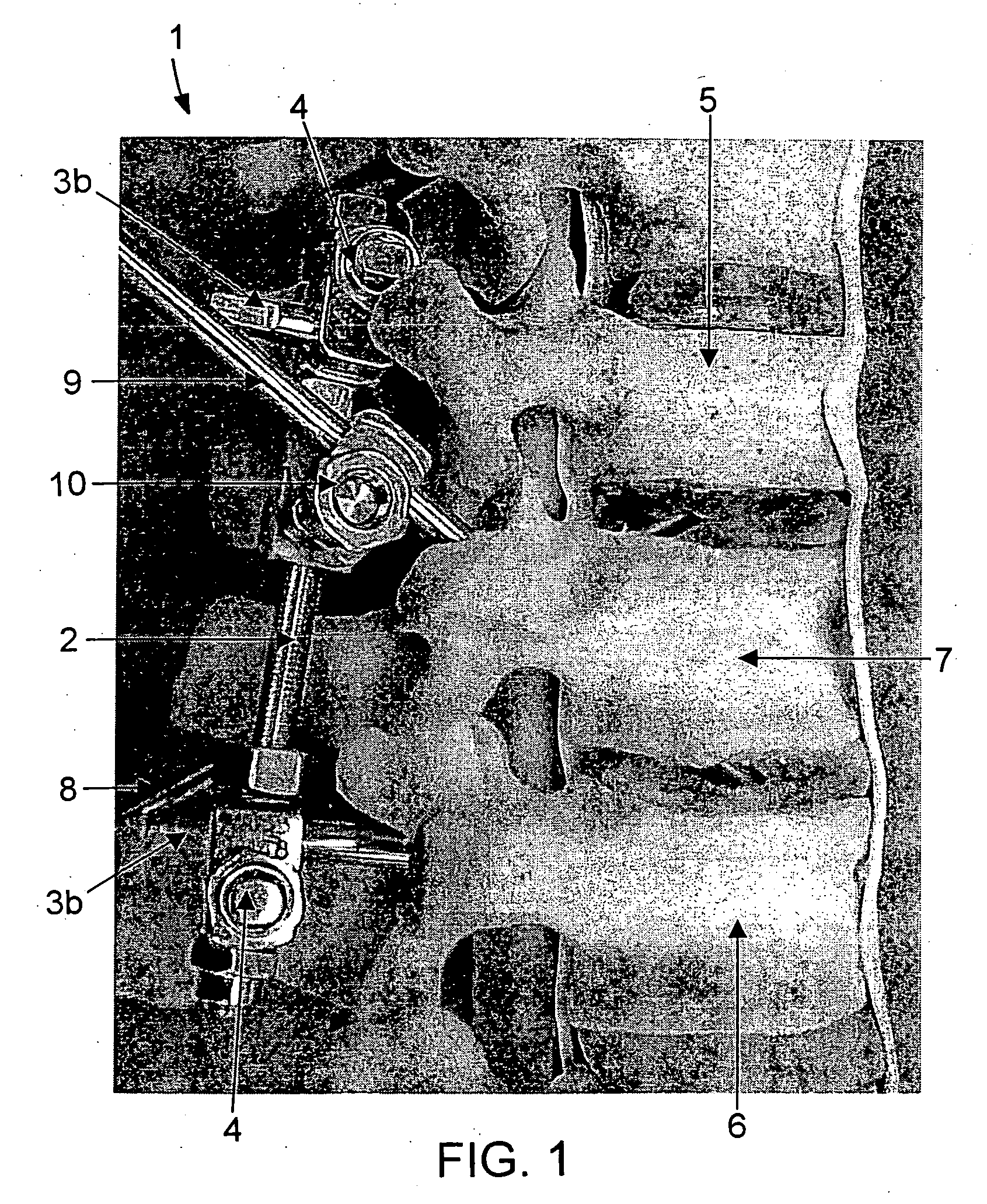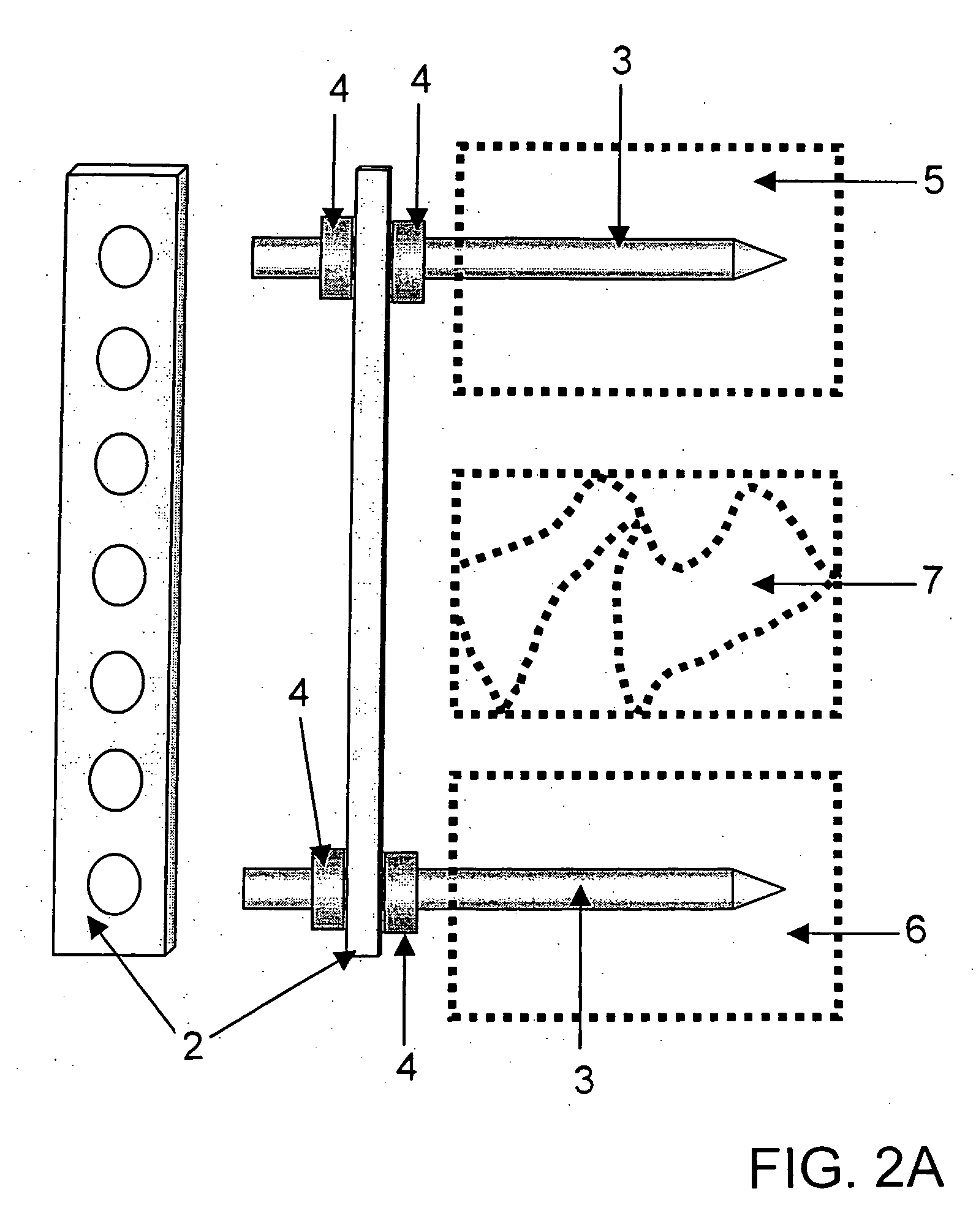Spinal fixation support device and methods of using
a technology of fixation support and spine, which is applied in the field of orthopaedic devices, can solve the problems of high instrumentation failure rate, instrumentation failure, implant failure, etc., and achieve the effects of reducing instrumentation failure, increasing the effectiveness of spinal fixation instruments, and reducing bending moments
- Summary
- Abstract
- Description
- Claims
- Application Information
AI Technical Summary
Benefits of technology
Problems solved by technology
Method used
Image
Examples
example 1
Mechanical Testing of the Pillar System Using a Synthetic Resin Spine
[0040] Mechanical testing of the pillar system was performed using synthetic resin vertebrae (Acetal; Delrin, Precision Punch & Plastics Co., Minnetonka, Minn.). Dick short-segment pedicle instrumentation (Internal skeleton fixation system ISFS; Sulzer Ltd CH-8401, Winterthur, Switzerland) was used as the spinal fixation instrumentation. The specimen was mounted on a servohydraulic machine (MTS, Minneapolis, Minn.). An axial load of 10 N / m torque was applied to the top of the vertebral body (195 Newton load with a 0.052 meter moment arm) (FIG. 5). This axial load to the vertebral body is commonly used for mechanical testing (see, for example, Dooris et al., 2001, Spine, 26:E122-9, and references therein). The testing was first performed without a pillar system. After pillars were installed, the test was repeated. The load and displacement of the vertebrae were recorded at 20 Hz. FIG. 6 shows the results from such ...
example 2
Mechanical Testing of the Pillar System Using a Human Cadaver Spine
[0041] A human cadaver spine from T12 to L2 was harvested for the mechanical test. The anterior three-fourths of the L1 vertebral body was resected to simulate a severe non-load-bearing situation. Compression of the harvested spine was performed by hand until the T12 touched the L2 anteriorly to create an unstable spine model.
[0042] The two pedicles in the L1-fractured vertebra were prepared for pillar insertion as described herein. Following preparation of the holes for pillar insertion, Dick spinal fixation instrumentation using 5 mm pedicle screws was installed between T12 and L1 using a standard surgical procedure as would be performed by an orthopedic surgeon. The bottom of the L2 vertebral body was embedded in bone cement and the specimen was mounted in the servohydraulic machine for mechanical testing (FIG. 7A). An axial load of 7.5, 10, or 15 N / m torque was applied anteriorly to the top of the vertebral bod...
PUM
 Login to View More
Login to View More Abstract
Description
Claims
Application Information
 Login to View More
Login to View More - R&D
- Intellectual Property
- Life Sciences
- Materials
- Tech Scout
- Unparalleled Data Quality
- Higher Quality Content
- 60% Fewer Hallucinations
Browse by: Latest US Patents, China's latest patents, Technical Efficacy Thesaurus, Application Domain, Technology Topic, Popular Technical Reports.
© 2025 PatSnap. All rights reserved.Legal|Privacy policy|Modern Slavery Act Transparency Statement|Sitemap|About US| Contact US: help@patsnap.com



